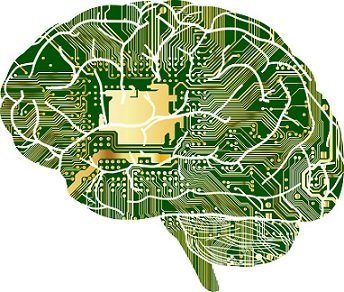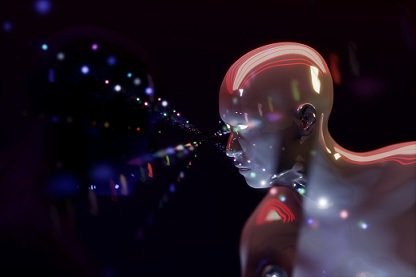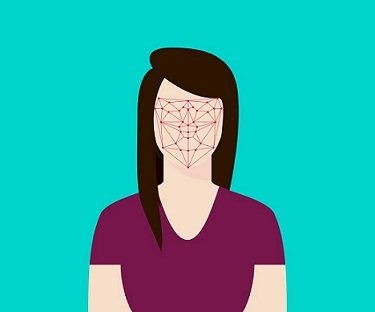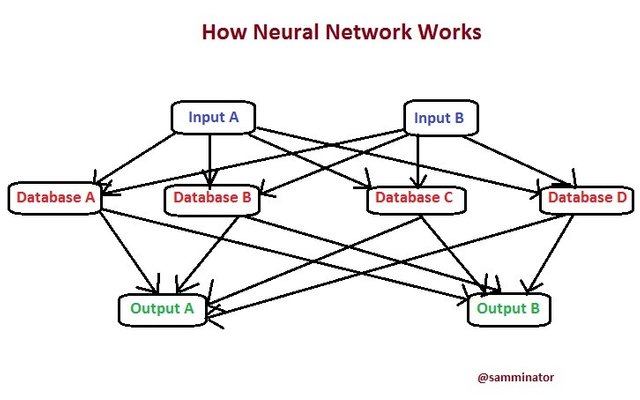Understanding The Principles Behind Deep Learning [Step Ahead In Machine Learning]
Introduction
Almost everyone in this era may have heard about Artificial Intelligence (AI) and even Machine Learning (ML), well except you have been sleeping all these while, lol. But don't feel bad if you haven't heard about it, I would be pointing you to the right direction. Also we would be looking at a very important technology that hinges on Machine Learning, and that is the Deep Learning.

[Image Source: Pixabay. CC0 Licensed]
Just like you may have known; Artificial Intelligence is simply the technology that simulates or mimics the human cognitive abilities in machines, in order for the machines to carry out some pre-defined functions. For example; the Google's AlphaGo is explicitly designed to play the game of Go, just like humans would do, or even better.
But moving further from that, we have the Machine Learning. Just like the name suggests; it is the ability of machines to acquire new sets of information and data, which could be from interactions with other systems; and not just being pre-coded and straight-jacketed to a particular function. Quick tip for you before I continue: There is the "Machine teaching"; and this is the process by which these machines can transmit these acquired data to other machines, which would be used by the new machine to perform some tasks. Just think about it as the teacher-student scenario.
Okay let's continue. The machine Learning can be further subcategorized into two:
Now we have had some basic knowledge of AI and ML, there's a step further from this; and that is the Deep Learning (DL).

[Image Source: Pexels. CC0 Licensed]
What is deep learning?
In a simple term; Deep Learning (DL) is a type of Machine Learning that uses complex algorithms to acquire new sets of data and also use them to make intelligent autonomous decisions in response to a particular situation in real-time.
Hard to understand? Let me break it down for you further: DL is like training a machine to form a kind of networks of data, and use these networks to process data from a given set of instructions. But note; for deep learning to be effective, large sets of data must be involved for the machine to relate with. For example, in the case of the Digital Twin we discussed sometime ago, this can be an effective source of data for the deep learning system. But here's an alert for you: Because of the fact that DL deals with large data sets, the machine itself is required to be computationally powerful enough to hold off such amount of data.
One of the practical applications of the Deep Learning is in the case of using the facial recognition system to solve crime. Here's a little simulated real-life scenario of how this works: When someone perpetuates a crime and he's on the run, the person's bio details would be fed into the system and they would be sent to all the street's depth-resolution CCTV surveillance cameras. As people would be trolling the streets, these cameras would be picking up their faces and relating them with a large database of people's bio data to find a suitable match (which is the criminal being sought), and this is done in split seconds. When it does locate a match, it would send signals to the remote servers, and further actions would be taken to apprehend the criminal.
From the above example I gave, you would agree with me that; for a machine to effectively relate with the faces of everyone in the metropolis; for example; it would require a very large computational and processing capacity. That's why Deep Learning works effectively when large data is involved.

[Image Source: Pixabay. CC0 Licensed]
There is also another technology which can be hinged on to the Deep Learning to make it better; and that is the Neural Networks (sounds like we're about to witness the rise of superintelligent machines).
Concept of Neural Networks
For an easier understanding, let's look at it this way: The human brain is composed of interconnected set of neurons which have been tasked with the transmission of nerve impulses. Similarly, this is what neural network is to machines: It is a system of interconnected nodes, which is responsible for the processing of complex signals and also for solving of extremely large computational problems.
For example: In the technology of speech-recognition, the system would have to form a series of database of various accents, tones, and intonations and link them together, so when data is inputted (in form of voice commands), the system can relate from the database and understand which type of command is issued; and of course; use it to perform some tasks.

[Image Source: Homemade by me @samminator]
That is why "deep learning" and the technology of "neural networks" work in apposition to each other. Also, it is worthy to note that neural network is adaptive in nature. That is; they are designed in such a way to learn from the first training, and then alter their properties in due course to apply the learning they have acquired to other scenarios as they present themselves. Just like in the example of the speech recognition I mentioned earlier.
Before I wrap up; I wouldn't have you ignorant of this fact: A group of neural networks can be combined to form a single complex whole. This is called the "Deep Neural Networks". Just like you have seen, neural network is the collection of nodes, but these collections can be further merged or grouped together into one central network. This is practicalized in the tip I gave you earlier about "Machine Teaching". The deep neural networks also allow a system to function in full capacity of "Machine Leaning" and "machine Teaching". This also has some potentials applications; and among others; is the designing of highly intelligent machines that would make decisions in real-time without recourse to any human input.
Conclusion
As the technologies of AI and ML are advancing, more possibilities are arising, and the overall system is getting smarter and more complex. We have seen the technology of deep learning and how they are applied, and also other technologies which it is hinged on. These are pointers to one thing; the human cognitive abilities can be replicated, and even better.
Thanks for reading
References for further reading:
- MIT_Technologyreviews/deep-learning
- Representation_of_machine_learning.pdf
- Intro_to_neural_networks
- sas.com/machine-learning


gif by @foundation
great post ! maybe you can make a post about different algorithm in machine learning
Very good your post my friend
Thanks
Oh god. I have hear about Ai, and really want to study about it. Even i know, it's so complicated. But, i'll try. And this post is one of my data. Thanks sir.
Thanks for reading
Big data, machine learning etc...As we advance further, the concept of these technologies will exhibit great advantage in our environment especially when they are based on real-time learning. we are yet to see the power of technology!
That's the idea bro; "real-time" learning and applications.
Technology can only get more advanced.
Thanks for coming around bro
These technologies are surely going to shape our future big time!
I think I read a while ago this technology could also be used in the medical field to identify diseases faster.
Btw the article was posted again by mistake, something similar happened to me a few months ago when I used steemauto to publish.
You're right. Even recently, We've seen some medical AIs diagnose dieases even faster than the human doctors. The potential in this is almost limitless.
Yeah I discovered the post was duplicated. I've deleted one.
Thanks man
Hello @samminator
Your explanations of different technologies by human cognitive abilities are being replicated, are topnotch. I particularly found the concept of deep learning highly interesting.
Regards
@eurogee of @euronation and @steemstem communities
Thanks a lot for the kind comments buddy. I appreciate
There are so many laws that I think we all break some law or another probably on a weekly basis.
With Deep Learning surveying our activities and our whereabouts it might just be a matter of time before we are all arrested and thrown in jail.
Lol. But it would help to reduce the tendency of committing a crime. I mean, if you know you're gonna get nuked when you commit a crime, you may have a rethink.
Thanks for the comments buddy
Stretch... Yawn...
Sorry, just woke up... what's AI?
Lol. AI? I just woke up too :p
But, maybe smash would know :)
Hi @samminator!
Your post was upvoted by utopian.io in cooperation with steemstem - supporting knowledge, innovation and technological advancement on the Steem Blockchain.
Contribute to Open Source with utopian.io
Learn how to contribute on our website and join the new open source economy.
Want to chat? Join the Utopian Community on Discord https://discord.gg/h52nFrV
I didnt know some of these things existed until now. Really interesting and cativating post. Keep it up!!
Thanks for coming around